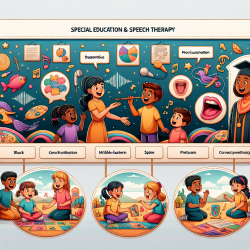Understanding the Contagion Effect in School Shootings
In the realm of speech-language pathology and education, understanding the factors that contribute to school shootings is vital for creating safe learning environments. A recent study titled Contagion in Mass Killings and School Shootings provides critical insights into the patterns and contagion effects of these tragic events. By delving into this research, practitioners can better equip themselves to address and mitigate potential risks in educational settings.
The Contagion Model: Key Findings
The study employs a self-excitation contagion model to analyze data from mass killings and school shootings in the United States. The findings reveal significant evidence of contagion in these events, meaning that a school shooting or mass killing can temporarily increase the likelihood of similar incidents occurring in the near future. This contagious effect is observed to last approximately 13 days, with each incident potentially inciting at least 0.22 new incidents in the case of school shootings (p = 0.0001).
Implications for Practitioners
Understanding the contagion effect is crucial for practitioners working in schools and therapy settings. Here are some ways practitioners can use this information to improve their skills and contribute to safer environments:
- Awareness and Monitoring: Practitioners should be aware of recent incidents and monitor any potential signs of distress or ideation in students. This proactive approach can help identify at-risk individuals and provide timely interventions.
- Collaborative Efforts: Collaborate with educators, mental health professionals, and law enforcement to develop comprehensive safety plans that address potential threats and provide support for students in need.
- Education and Training: Engage in continuous education and training to stay informed about the latest research and best practices in preventing school violence. This knowledge can empower practitioners to implement effective strategies in their work.
- Promoting Positive Media Practices: Encourage responsible media reporting on school shootings to minimize sensationalism and reduce the risk of contagion. Practitioners can advocate for media guidelines that focus on prevention and support rather than sensationalizing violence.
Encouraging Further Research
While the study provides valuable insights, it also highlights the need for further research into the contagion effect and its underlying causes. Practitioners are encouraged to engage in research initiatives that explore the psychological and social factors contributing to school shootings. By contributing to the body of knowledge, practitioners can help develop more effective prevention strategies and policies.
Conclusion
The contagion effect in school shootings underscores the importance of data-driven decisions and collaborative efforts in creating safe educational environments. By understanding the dynamics of these tragic events, practitioners can enhance their skills and contribute to positive outcomes for children. For those interested in delving deeper into the research, the original study can be accessed here.










